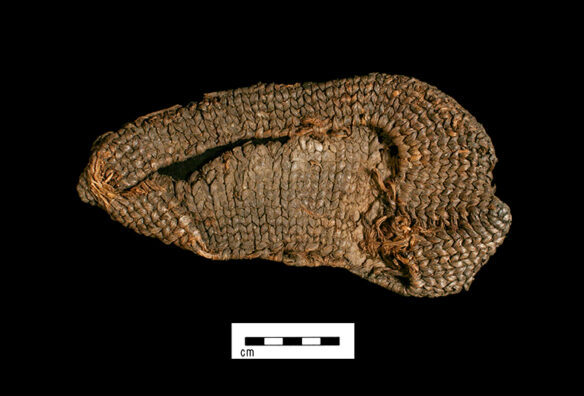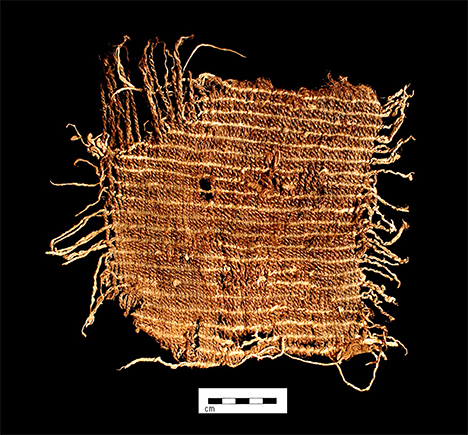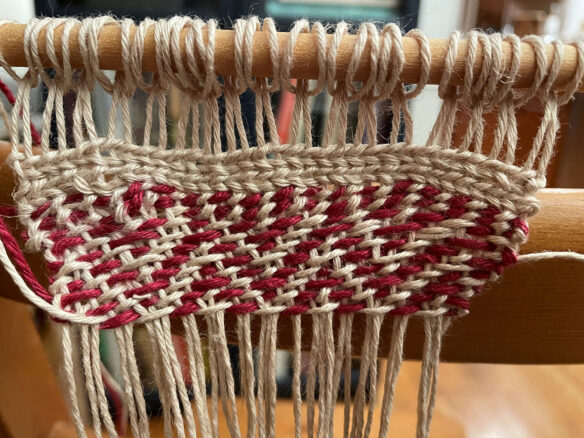
Slippers were the perfect footwear for exploring Kentucky’s caves and rock shelters. This 2,500-year-old twined slipper is from a site in Edmonson County, Ky.
Image courtesy William S. Webb Museum of Anthropology, University of Kentucky.
This article highlights aspects of Kentucky’s deep – and not so deep – past as revealed by uncommon and often overlooked documents, archaeological sites and the artifacts they hold.
This play on words in the title is purposeful: uncovering because this series draws from Kentucky’s rich archaeological heritage, uncovered over the course of a century of research. Uncovering because this concept and technique figures importantly in inquiry-based teaching and in Grant Wiggins and Jay McTighe’s “backwards” design model explained in their book, “Understanding By Design.”
“Uncovering Kentucky History” has three goals:
- To inform you: Kentucky’s historic places are fascinating windows into long-ago technologies, buildings, art and foodways. They show us the many different ways there are to be human.
- To inspire you: Diverse peoples – long-ago American Indians, Europeans and Africans – lived where we do now. Their stories are written in Kentucky’s landscapes, and archaeology provides us a way to read those stories.
- To help you: Archaeologists know Kentucky teachers are desperately seeking Kentucky-centric instructional resources. This series will help you access these materials.
So, let’s get started!
It Wasn’t All Furs and Leathers

Native weavers used fibers from two different plants to create stripes in this 2,000-year-old twined textile fragment from a Menifee County rock shelter site.
Image courtesy William S. Webb Museum of Anthropology, University of Kentucky.
For millennia, Kentucky’s ancient Native peoples wore fancy lace shawls and hard-wearing slippers and sandals, and used heavy-duty bags made from textiles. And just like textiles today, they made their textiles from yarn, used for woven items, or cordage for items like rope.
Their fabrics were made from bundles of long, thin strands of twisted plant fibers. They knew which plants produced the best fibers for the textiles they wanted to make: the stems of milkweed, dogbane and stinging nettle for clothing, or the leaves of rattlesnake master for footwear.
Native weavers spun the fibers into yarn or cordage by hand using a spindle against their thigh. They did not use spinning wheels. And although they wove many textiles with only a wooden frame, they mostly wove without any frame or support at all. These weavers created complex patterns and designs using colored yarns, dyed or painted with natural pigments like those from sumac and walnuts.
Ancient Native craftspeople used two different weaving techniques: twining and plaiting. Twining, which entails twisting two yarns together around a third perpendicular yarn, dates back at least 10,000 years. For plaiting, Native weavers passed yarns over and under each other. They created twill patterns, which are thousands of years old, by changing how many times they passed a horizontal weft yarn over and under a vertical warp yarn.
But how do we know about Kentucky’s ancient Native textiles? Textiles – and the yarn and cordage used to make them – are perishable artifacts. They decay over time. Indeed, archaeologists estimate that 90% of the items people made long ago were produced from perishable materials.
Fragments of ancient Kentucky yarn, cordage and textiles will preserve when conditions are just right. Archaeologists have found these ancient perishable items in the bone-dry soils of some eastern Kentucky rock shelters and deep within some Kentucky caves, with their constantly cool temperatures.
Instructional Resources

Archaeologists work with Native peoples, observing their techniques, and then they try their hand at making copies using the very same steps and same materials they find at archaeological sites. For this replica-in-progress, the archaeologist-weaver used yarns of different colors to replicate ancient Native weavers’ technique of creating designs with twining.
Image courtesy Living Archaeology Weekend.
American Indian Textiles Episode 1 in the new “Virtual Living Archaeology Weekend Video Series” examines the inspiration, traditions, creativity and diversity of ancient and traditional American Indian textile technologies. Archaeologist and textiles specialist Christina Pappas explains how Kentucky’s ancient American Indians made textiles and demonstrates how archaeologists study these past technologies. Choogie Kingfisher, Cherokee cultural educator and storyteller, reflects on the importance of conserving cultural traditions and shares a brief history of the Cherokee people.
Supporting educational materials from Living Archaeology Weekend address 4th- and 5th-grade Kentucky Academic Standards in Social Studies, Reading and Writing and Kentucky Academic Standards for Visual and Performing Arts and engage students in the Kentucky Academic Standards for Reading and Writing interdisciplinary literacy practices. They provide ideas on how to use all or sections of this 15-minute program. A hands-on lesson plan provides detailed instructions on how to make cordage and offers students an opportunity to experience a technique and skill Kentucky’s ancient peoples needed for everyday life.
Living Archaeology Weekend is an award-winning program of high-quality, interactive demonstrations on American Indian and Pioneer technologies and lifeways, archaeological methods, and cultural resource preservation. It is held on the third Friday and Saturday of each September in the Red River Gorge. The Friday event is reserved exclusively for 5th-grade Kentucky students and their teachers. In early August, contact Living Archaeology Weekend via their website or check their Facebook page for how you and your students can participate. In the meantime, watch American Indian Textiles and explore the supporting educational materials.
A. Gwynn Henderson is education director at the Kentucky Archaeological Survey, a program of the Department of Folk Studies and Anthropology at Western Kentucky University. She is also a member of the Kentucky Native American Heritage Commission and a facilitator for Project Archaeology and Prime Time. Her archaeological research and publications focus on ancient Native farming cultures of the middle Ohio Valley. As a public archaeologist, she writes for children and adults, and works with others to develop lessons, booklets, videos, programs and museum exhibits to raise awareness of Kentucky’s rich history.



Leave A Comment